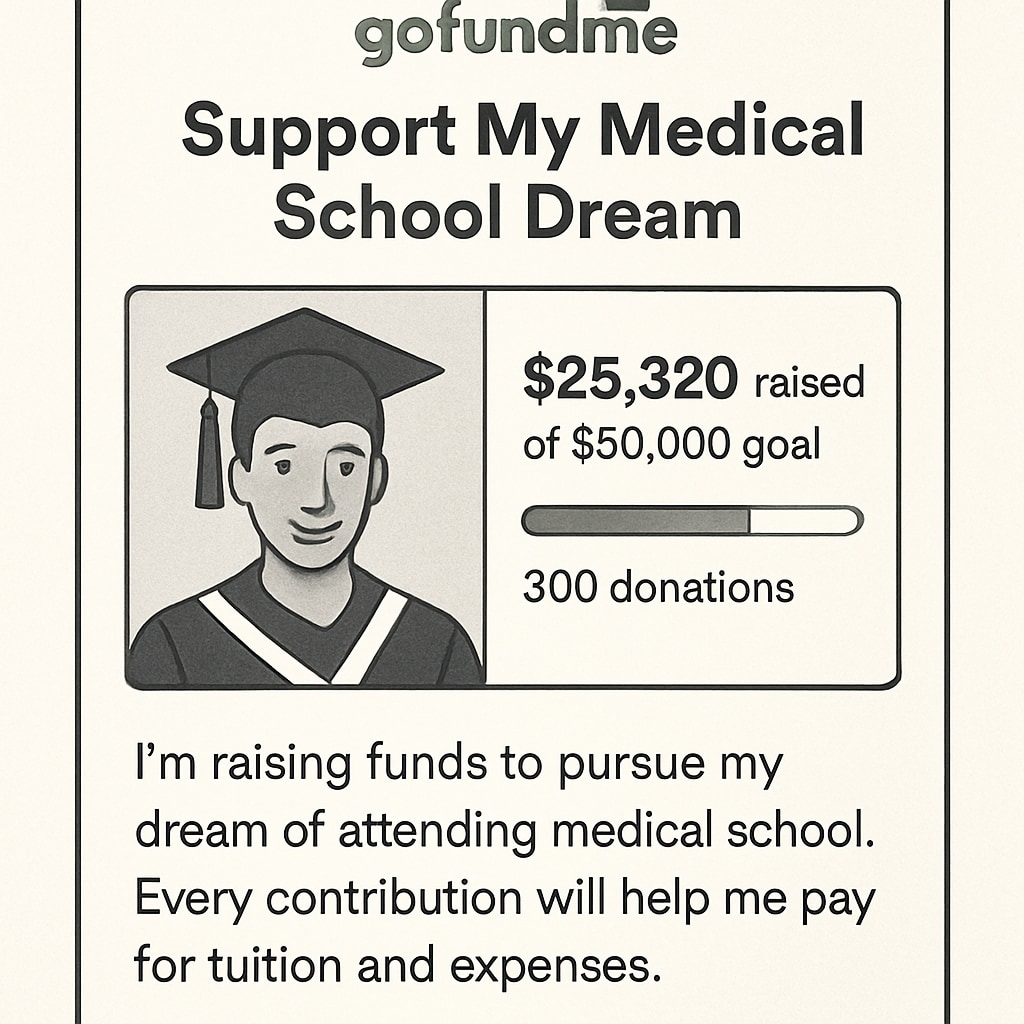For countless aspiring medical students, “tuition struggles, GoFundMe, and medical school applications” are more than just phrases—they represent real obstacles standing in the way of their dreams. The journey to becoming a doctor is already challenging, requiring years of rigorous study and unwavering determination. However, when financial burdens compound these challenges, many promising futures are put at risk. In this article, we explore how students can overcome economic obstacles through innovative social tools and structured support systems to pursue higher education and medical school goals.
Understanding the Financial Struggles of Independent Students
Independent students, often those without parental financial support, face unique challenges when pursuing higher education. College tuition has skyrocketed in recent decades, with fees for medical school climbing even higher. According to Wikipedia’s overview on student debt, the average cost of attending medical school in the U.S. ranges from $200,000 to $300,000. For a student already grappling with undergraduate expenses, these figures can feel insurmountable.
In addition to direct costs like tuition, students must contend with indirect expenses such as housing, textbooks, and application fees. Without external support or significant savings, these financial pressures can lead to students abandoning their medical aspirations altogether.

Leveraging GoFundMe and Crowdfunding Platforms
Crowdfunding platforms like GoFundMe have become lifelines for students facing financial challenges. By sharing their stories and connecting with communities, students can receive monetary support to cover tuition, application fees, or other college-related expenses. For example, a student might launch a campaign titled “Help Me Become a Doctor” and explain their journey, highlighting both their achievements and financial need.
However, successful crowdfunding requires careful planning. Here are a few tips for students looking to use these platforms:
- Be transparent: Share details about your financial situation, academic goals, and medical school aspirations.
- Use storytelling: Personalize your campaign with anecdotes and milestones that resonate emotionally.
- Utilize social media: Spread your campaign across platforms like Facebook, Twitter, and LinkedIn to reach a wider audience.
While not guaranteed to cover all expenses, these campaigns often provide essential funding for students in need.

Exploring Scholarships and Financial Grants
In addition to crowdfunding, scholarships and grants are vital resources for independent students. Many organizations specifically support underprivileged students pursuing careers in medicine. For instance, the Britannica entry on scholarships highlights the importance of merit-based and need-based financial aid programs.
Students can maximize their chances of securing scholarships by:
- Researching local opportunities: Many community organizations and hospitals offer scholarships for aspiring medical professionals.
- Applying early: Scholarship deadlines often close months before tuition payments are due.
- Customizing applications: Tailor each essay or application to align with the organization’s mission and values.
By combining multiple scholarships, students can significantly reduce financial barriers to higher education.
Building a Sustainable Future in Medicine
For students pursuing medical school, overcoming financial obstacles is not just about funding their education—it’s about building a sustainable and impactful career. Medical professionals play critical roles in society, addressing healthcare needs and improving lives. Therefore, investing in programs that support these students benefits communities as a whole.
In addition to personal fundraising and scholarships, students can explore government programs, institutional aid, and mentorship opportunities to navigate financial challenges more effectively. As a result, they can focus on their studies and dedicate themselves to their ultimate goal: making a difference in healthcare.
Ultimately, tools like GoFundMe, scholarships, and community support serve as lifelines for independent students striving to break through economic barriers. With determination and access to these resources, the dream of attending medical school can become a reality for more individuals, regardless of financial constraints.


